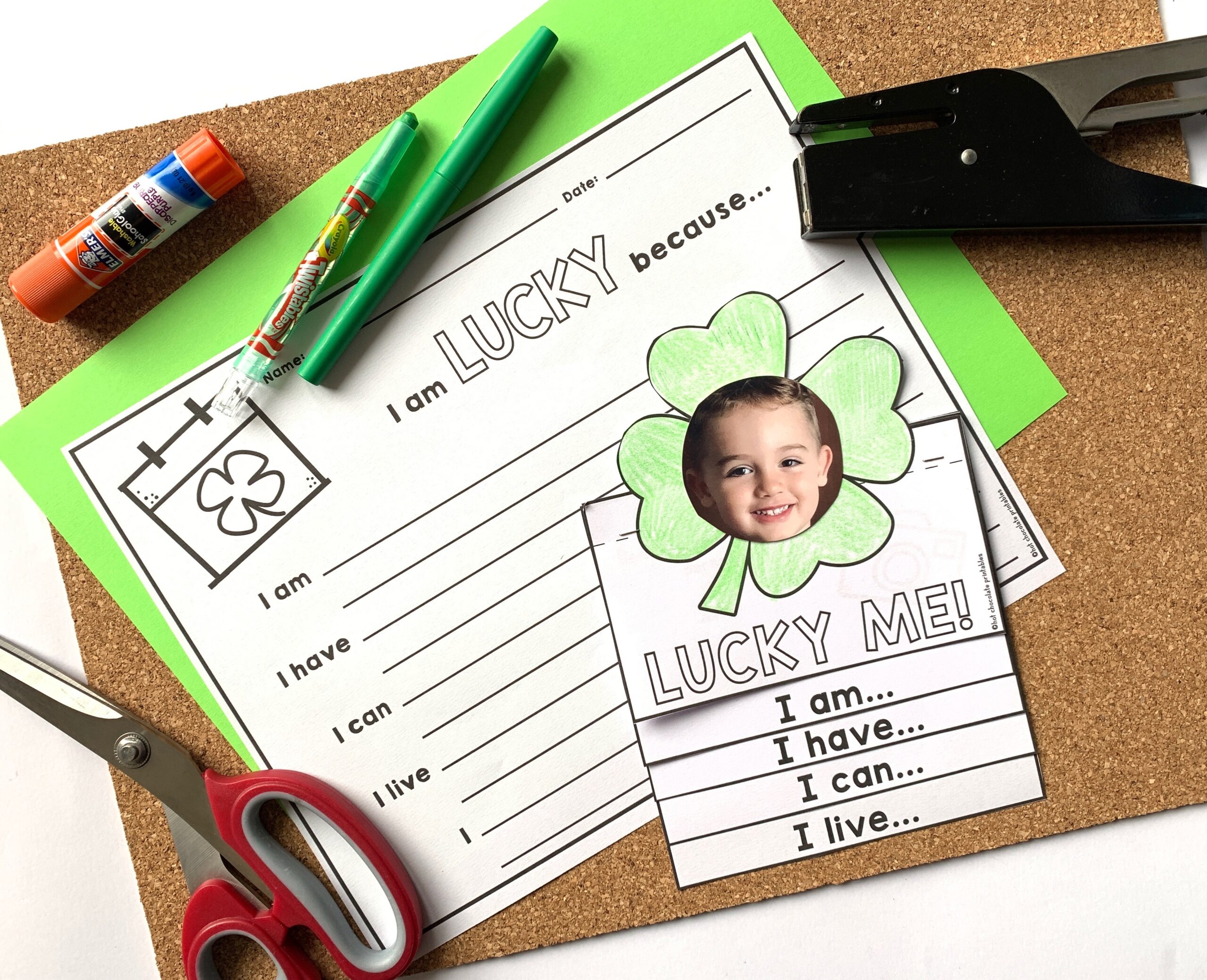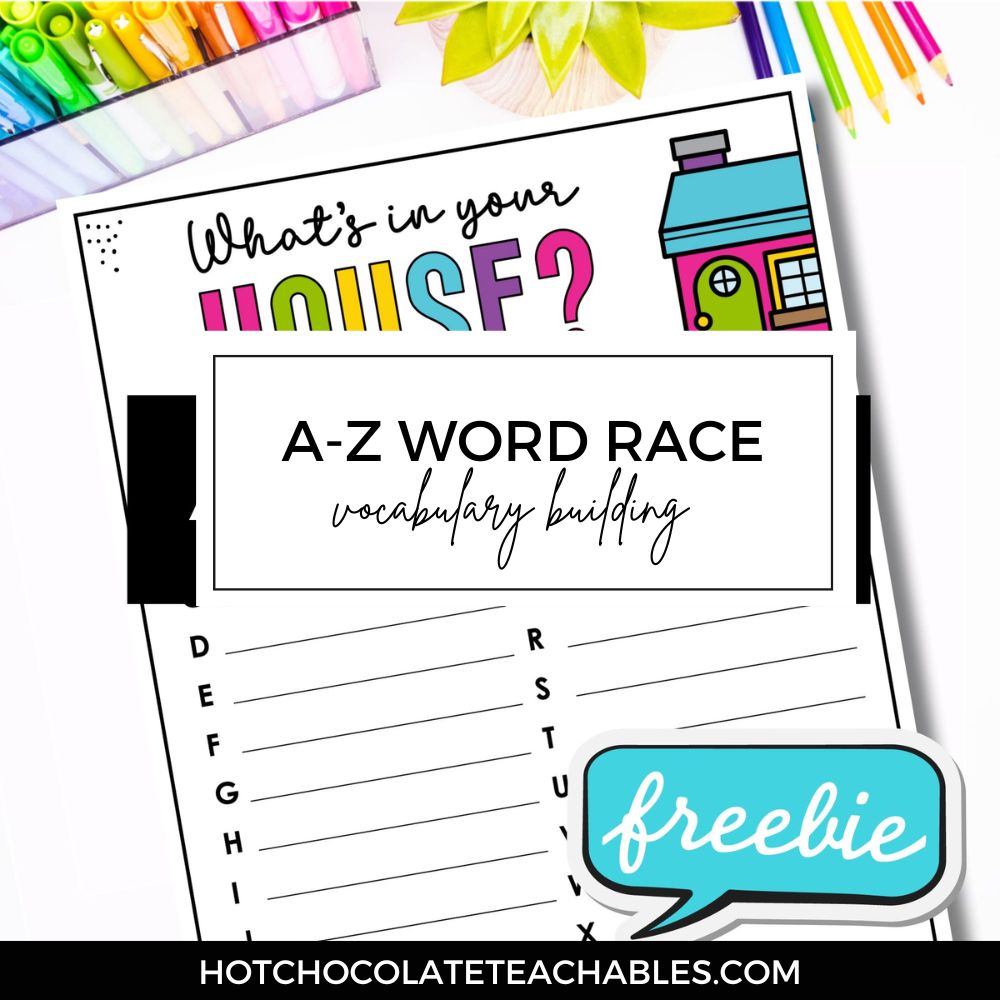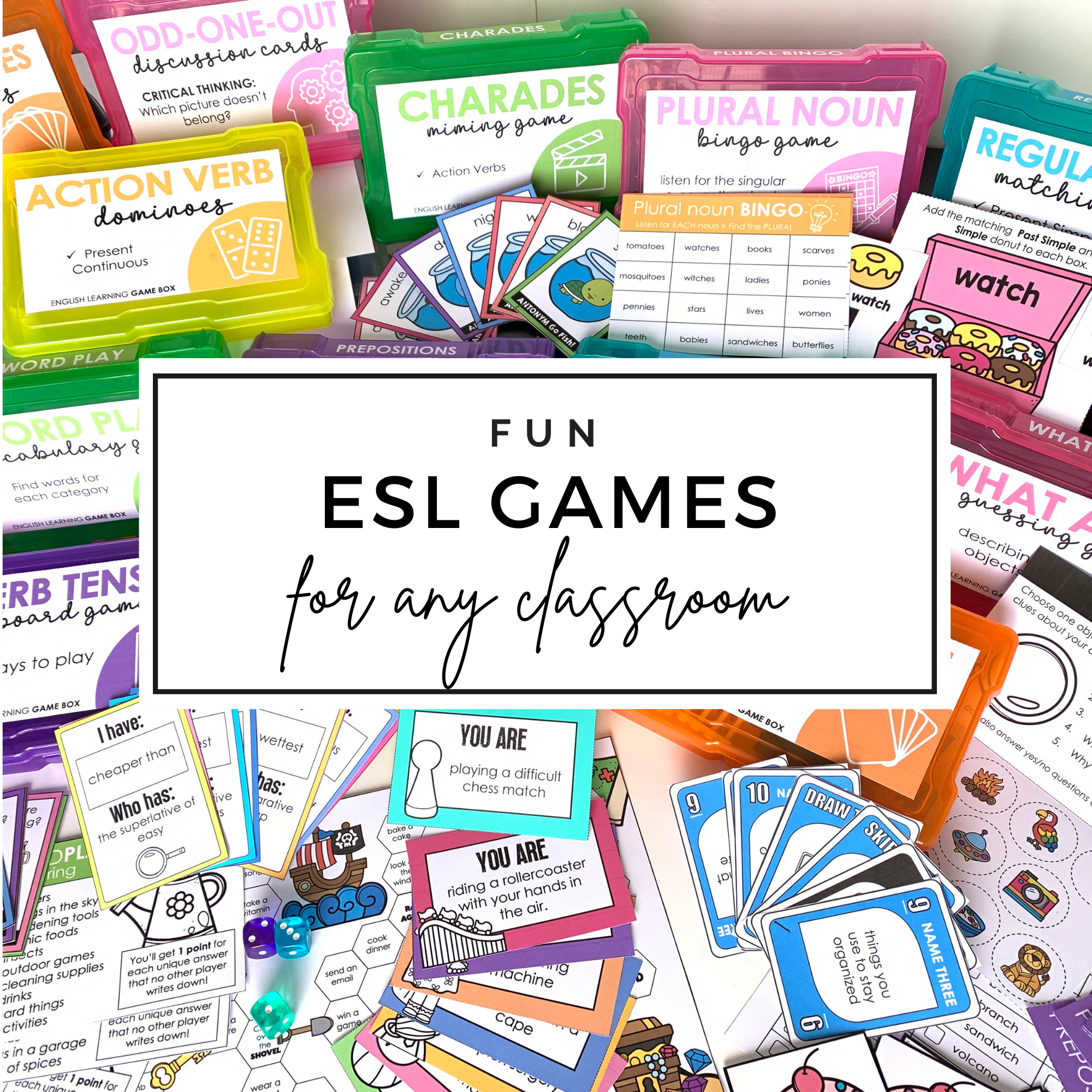This St.Patrick’s Day Flap book is a simple writing activity to use basic verbs in a simple sentence structure to talk about why each student is lucky. I love using simple flap books with my students for a number of reasons. Since I teach a wide variety of age and skill levels, I find that flap books are an activity that can be easily differentiated based on those two factors. Also, as an English as a Foreign language teacher, parents are so curious to know what their kids are doing. “Is my child learning anything?” – “Is my child able to communicate or recognize English words”. That’s why flap books are a wonderful way to involve family in the learning process. I always send them home with my students at different holidays to share with parents and siblings. It’s an easy way for kids to show what they’ve done without the horrible question, “So, what did you learn in English class today”. (As a parent, I know that the answer is most often – “I don’t know”.)
Here’s an that won’t disappoint:
Lucky Me : Flapbook for Young Learners and ESL students
Lucky me! This St. Patrick’s Day themed flap book is a great way to have your students express why they feel lucky. Using the prompts designed for Elementary level ESL student – have your class create and assemble these adorable books while using 4 different basic verbs (I am, I have, I can, I live) to express why they are lucky. It’s a engaging, hands-on activity that students can bring home at the end of the lesson. It is a low initial prep activity (you just need to make the b&w copies ahead of time and your students will do the rest in class. This activity can be easily differentiated to fit the exact needs and levels of your group. Included in the download there is also a worksheet using the same format if your students are older and you don’t want to make the flap book.
- Young learners can color a picture instead of a writing a word
- New reader/writers can respond using a single word
- More advanced students can answer using a complete sentence





